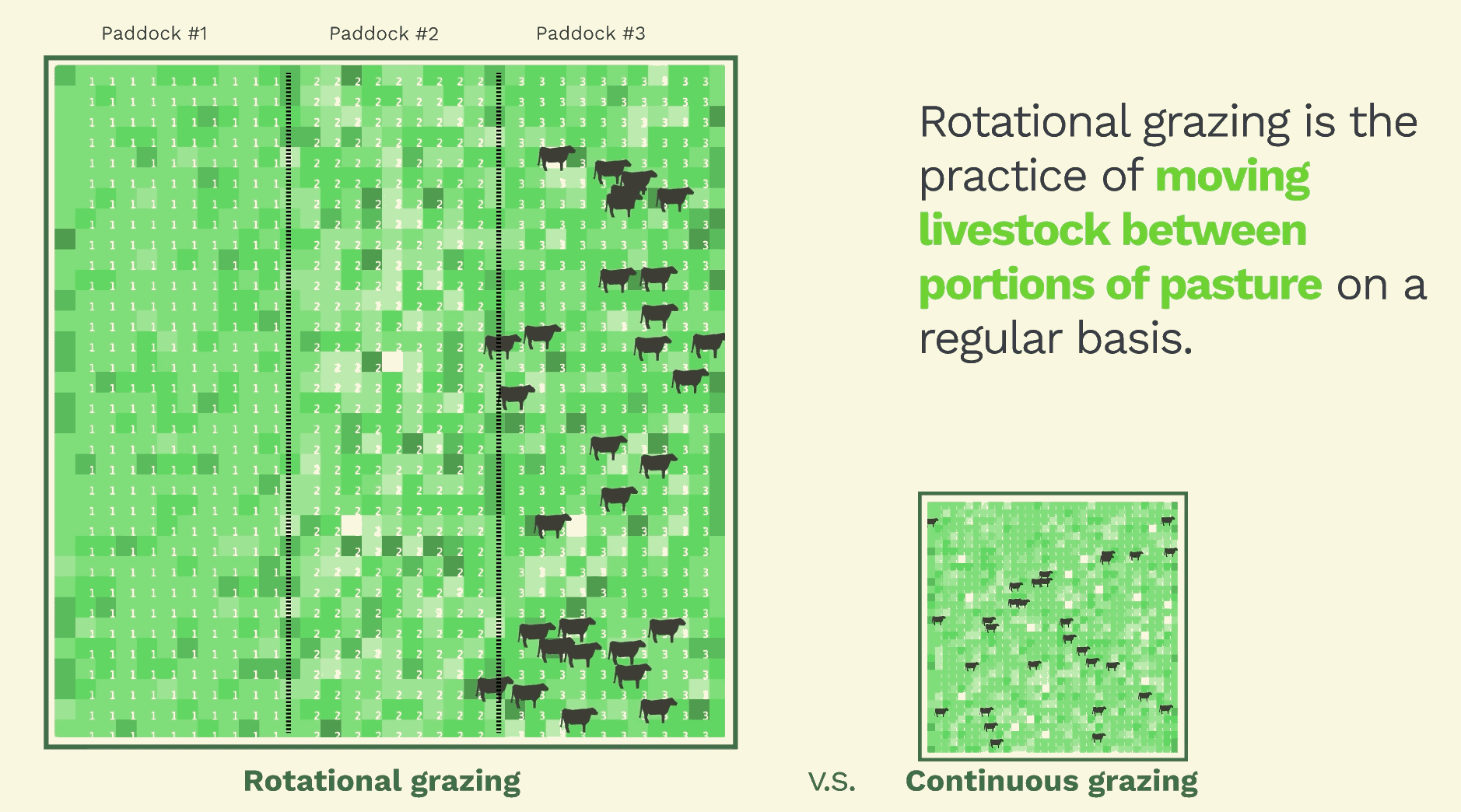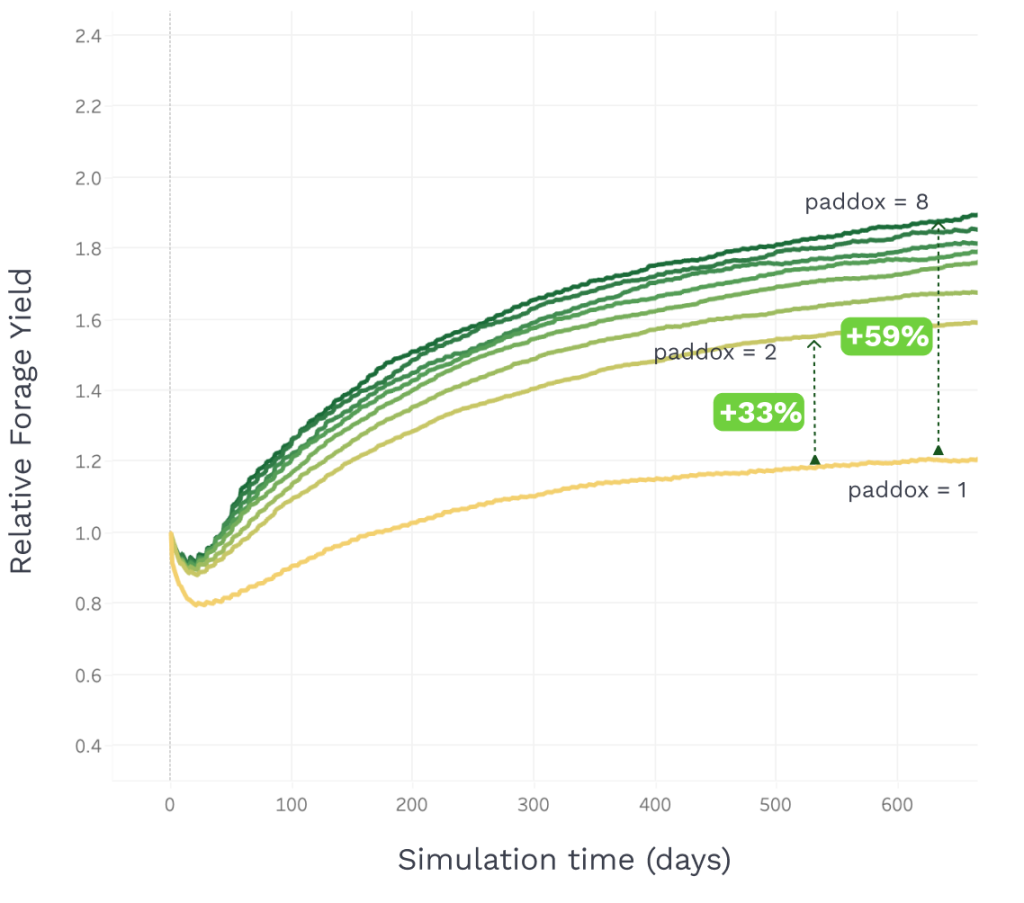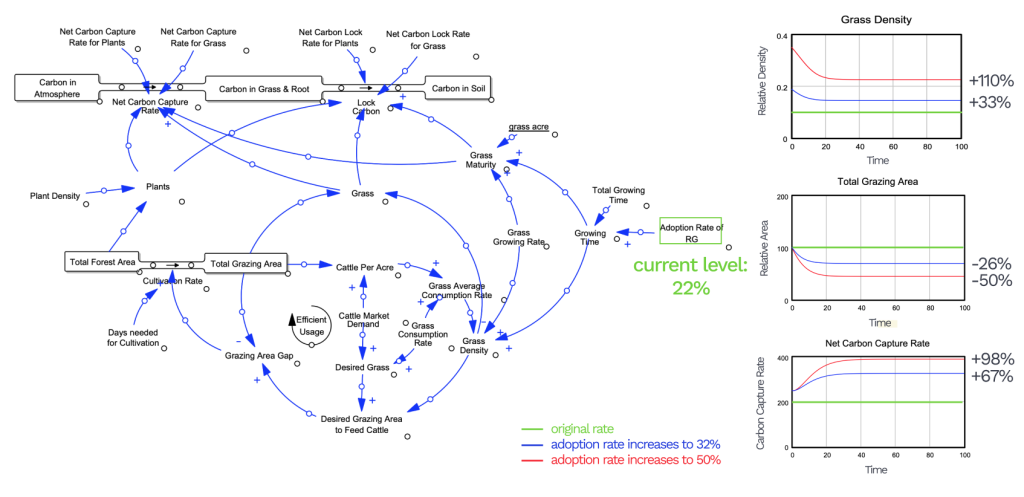This study is part of the collaborative studio team at Harvard MDE program. We developed a smart fence system that enables farmers to adopt rotational grazing with lower front cost and less labor input. I was mainly responsible for developing the models introduced below. Special thanks to my great teammates: Caroline Fong, Steven Morse and Manny. This project could be completed without the great help from Hampshire College. Also thank our leader actor cow Sweet Pea and dog Nyota. The product pitch video could be found here.

Rotational grazing v.s. continuous grazing
Rotational grazing, as opposed to continuous grazing, is the practice of moving livestock between portions of pasture on a regular basis. This gives the remainder of the pasture time to renew energy reserves, deepen root systems, and provide long-term maximum production.
Our team made a model to analyze and quantify the pasture production of continuous grazing versus rotational grazing and, as we see here, even just increasing the number of paddocks from 1 to 2 increases the relative forage yield by 30%. And as the number of paddocks increases, we see that the relative forage yield can increase by nearly 60% when compared to continuous grazing.

And pasture production is not the only benefit of rotational grazing.
- Rotational grazing practices allow farmers to have more cattle on the same plot of land.
- Rotating the cattle on the land also leads to a more even distribution of manure, which increases soil fertility and resistance to land erosion, while also putting important nutrients back into the land.
- This increases forage production as we just discussed, which both improves carbon sequestration and also leads to more resilient cattle who are less susceptible to disease.
- This ultimately leads to cows that gain weight at a faster speed with higher quality of meats, which provides economic gains to the farmer.
Play time!
Here is the model. Feel free to play and shoot me messages if you have any suggestions! Our model is modified based on Professor Ullah’s grazing model.
Rotational grazing and carbon emission
According research, rotational grazing practices can sequester 16-26 GT of carbon globally by 2050 (source). How can we reach this goal? To answer this question, we also developed a dynamic model to simulate the overall grazing area and carbon capture patterns based on the adoption rate of rotational grazing. As can be seen from the figure below, the current rotational grazing adoption rate is around 22% in US. If we could increase the adoption rate to 32%, then the grass density of the existing grazing field could increase 33%, and the total grazing area would decrease 26% which means we could use less field for grazing. Most importantly, the carbon capture capability of our land will increase 67% as there would be more plants with strong roots and denser leave. This simulation maybe far from scientific, but it gives us a way to quantitatively recognize how big impacts the grazing industry have on our environment.
